SKUDAI—The Faculty of Science (FS), Universiti Teknologi Malaysia (UTM) has successfully conducted a joint collaboration between Agri Season Sdn. Bhd., and Sekolah Kebangsaan (SK) Sri Pulai Perdana. This program involved the active participation of sixth-grade primary school students from SK Sri Pulai Perdana. The goal is to help students better understand microalgae through a series of knowledge transfer activities conducted at five different stations. Additionally, students received worksheets to fill out as they visited each station.
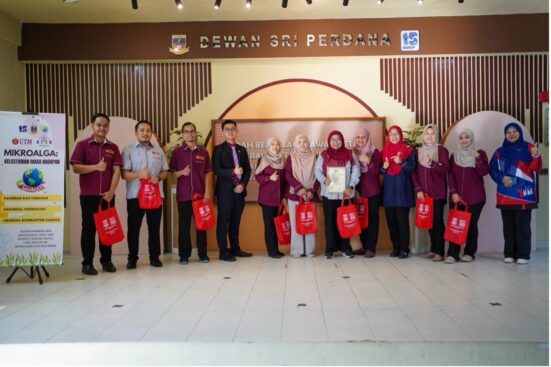
The Microalgae Talk was given by Dr. Mohd Farizal Ahmad Kamaroddin, an expert in the application of microalgae. During the session, Dr. Mohd Farizal delved into the fascinating world of microalgae, explaining its incredible potential in various industries, from environmental sustainability to health and nutrition. The talk was informative and interactive, with students having the opportunity to ask questions and engage in discussions. This left students with a deeper understanding and a newfound appreciation for the possibilities that microalgae can offer.
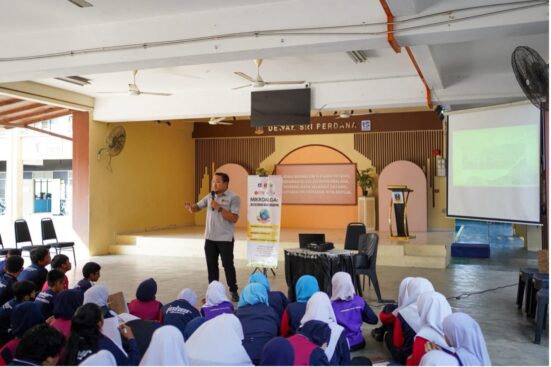
Dr. Abdul Fatah A. Samad introduced the students to the technique of culturing microalgae on an agar plate. He explained that this method is a simple yet effective way to observe and culture microalgae in a controlled environment. The students were shown how to inoculate microalgae and maintain it in the right conditions for optimal growth. Using agar plates, the students could see how microalgae colonies develop over time, making the invisible world of microorganisms visible and tangible.
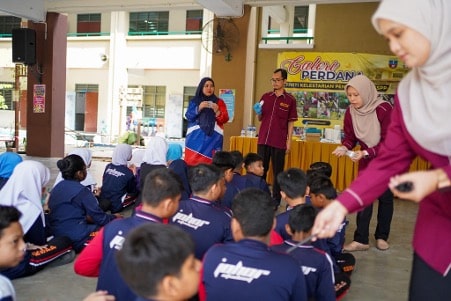
Students were instructed to observe microalgae using a smartphone and a microscope during the parallel session. This approach enabled students to capture clear images and videos of the microalgae, facilitating a closer study of their structure and behavior. At station 3 (tipscope station), students had to sketch and answer questions about microalgae and its use in water treatment. Finally, at station 4, students drew what they observed under the microscope.
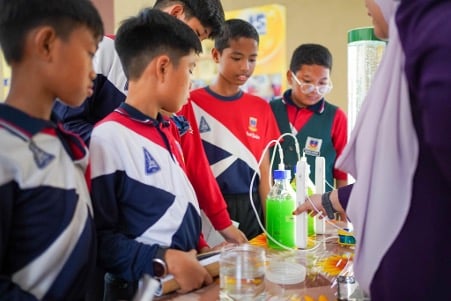
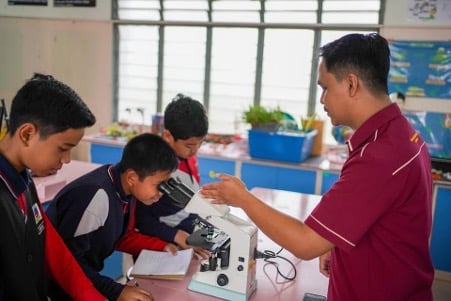
In the last station, students received instructions from Assoc. Prof. Dr. Nor Azimah Mohd Zain on how to construct a photobioreactor for microalgae. In this session, Assoc. Prof. Dr. Nor Azimah explained the main components of a bioreactor, including the light source, vessel, and aeration system, and how each part is essential for supporting the growth of microalgae. Students were then guided through the step-by-step construction process, learning how to assemble the bioreactor using easily accessible materials. In station 5, students were asked to draw and label the photobioreactor. Additionally, they were assigned to monitor the photobioreactor for two weeks to observe the growth of microalgae.
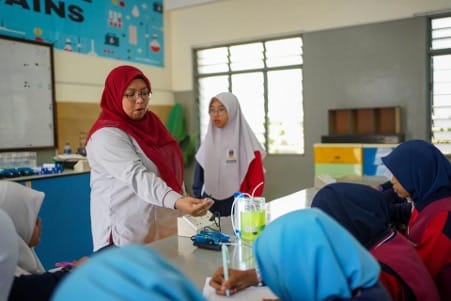
By the end of the session, students not only had a working bioreactor but also gained a deeper understanding of how such devices can be used to harness the potential of microalgae for various applications, from biofuel production to environmental sustainability. The hands-on experience and clear guidance from the team led by Associate Professor Dr. Nor Azimah empowered students to think creatively about the possibilities of using microalgae in real-world solutions.
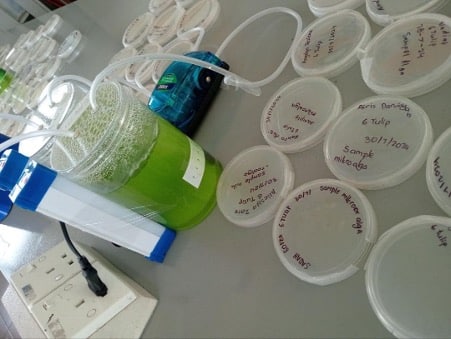
This community program aims to make learning about microalgae more accessible and exciting for students. It shows them how these tiny organisms can be fascinating and useful in real life. The program not only educates but also sparks curiosity and creativity, encouraging students to think about how microalgae might be important for a sustainable future.
After learning about microalgae through hands-on sessions in the project, the students applied their newfound knowledge and skills in a Science, Technology, Engineering, and Mathematics (STEM) Innovator for Tomorrow competition and secured second place. Their winning idea showcased how microalgae could be used to address real-world environmental challenges, demonstrating not only their technical skills but also their ability to think critically and innovatively. This victory in the competition was a testament to their hard work, creativity, and the power of transferring classroom knowledge into real-world problem-solving. This achievement not only brought pride to the students and their school but also highlighted the potential of young minds to contribute meaningfully to science and sustainability.
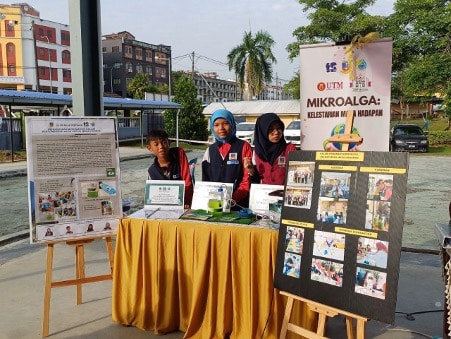
Prepared by: Dr. Mohd Aizuddin Mohd Lazaldin and Assoc. Prof. Dr Nor Azimah Mohd Zain

